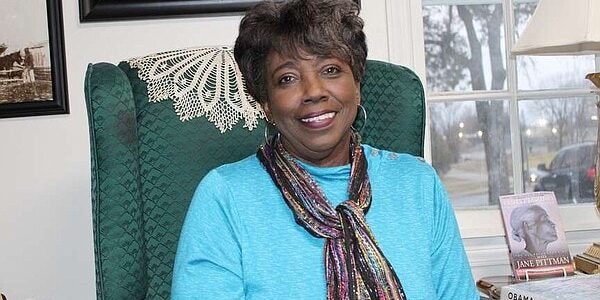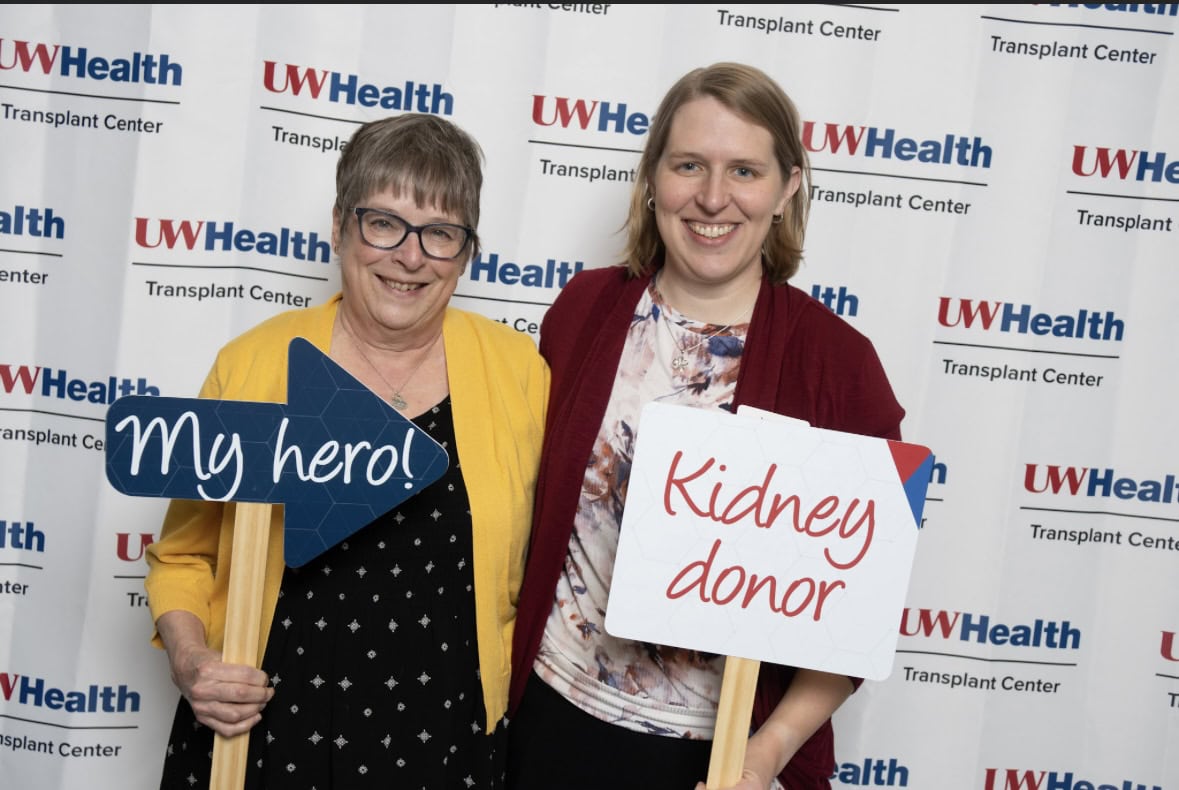Pat Johnson, AR, Pocahontas, Arkansas, remembers the day late last year when she received a phone call from Arkansas Senator John Boozman, who told her Receives Nationalshe had been nominated by the National Endowment for the Arts (NEA) for a National Heritage Fellows Award. “I have heard great things about you and the Heritage Fellows Eddie Mae Herron (EMH) Museum Center,” he said. “And this award, which is for you personally, comes with a really nice honorarium, $25,000.” Award
Although she was initially incredulous, the news—the award—the honor—it was all real. Pat had been selected as one of 10 National Heritage Fellows of the National Endowment for the Humanities, the nation’s highest honor in the Folk and Traditional Arts. Additionally, she had been designated as recipient of the organization’s highest honor, the Bess Lomax Hawes National Heritage Fellowship, presented “in recognition of an individual who has made a significant contribution to the preservation and awareness of cultural heritage.”
At an awards ceremony in June 2024, a large group of friends, family and community members gathered on the lawn of the Eddie Mae Herron Center to celebrate with Pat. Lauren Adams Willette, Fieldwork Coordinator at the Arkansas Folk and Traditional Arts Department of the University of Arkansas Libraries Special Collections Division (who nominated Pat for the award) and Virginia Siegle, Arkansas Folk and Traditional Arts Director and Arkansas State Folklorist, led the ceremony and outlined Pat’s selfless work in the restoration and preservation of what is now the Eddie Mae Herron Center in the 1919 building which once housed the “Pocahontas Colored School.”

Pat Johnson shares a moment at the recent award ceremony with Lauren Adams Willette, Fieldwork Coordinator at Arkansas Folk and Traditional Arts, a Department of the University of Arkansas Libraries Special Collections Division. Lauren nominated Pat for the 2024 Bess Lomax Hawes National Heritage Fellowship Award.
Originally an African Methodist Episcopal (AME) church, the modest frame building had also provided schooling opportunities for the community’s African American children from about 1940 through the years of segregation. Pat was enrolled in grades one through eight in this one-room school. She remembers how students—and sometimes even their parents in the evenings—were lovingly taught by the school’s only teacher, Miss Eddie Mae, namesake of the now-restored structure. Once students finished eighth grade, those who chose to continue their schooling were bused to a high school in Newport, a town about 50 miles from Pocahontas.
Busing continued for several years after the 1954 Supreme Court ruling in the case of Brown vs. the Board of Education, which declared that separate schools were inherently unequal and the practice was unconstitutional. Pocahontas Public Schools were forced to desegregate in the fall of 1965, bringing an end to the long life of the building as a “colored school.”
The building itself, still under ownership of the public school system, would serve various functions for the next few decades. Some years after her retirement from the county health department, Pat began to think about the importance of that building to the history of the African American experience in predominantly white Randolph County. With the building beginning to deteriorate, Pat, along with other former students, spoke to local organizations about the significance of the facility and the importance of preserving its history to educate future generations of students about the community’s African American heritage. With the establishment of a non-profit board of directors in 2000, and with subsequent commitments and funding support from the city and county, the work to restore the facility began in earnest. By the time of the facility’s grand opening as the Eddie Mae Herron Center in 2002, the building had been accepted into the National Registry of Historic Places, and a new chapter for the former “Pocahontas Colored School” began.
Under the careful guidance of Pat Johnson, chair of the EMH board of directors, the organization held an ever growing list of activities and events aimed toward educating the community about the African American experience in Randolph County and preservation of the rich heritage of lived experiences of the African American community. All vestiges of what life was once like for the Black population were preserved in the physical building when possible: even the now-faded “cake walk” numbers on the floor of the former one-room school remained to show how earlier occupants had funded the school’s needs. The photo of George Washington on the wall above where Miss Eddie Mae’s desk had stood reminds visitors and former students alike that the children, absent an American flag, had learned to pledge allegiance, hand over heart, while looking at the picture. A “Colored Only” sign over the entry to one of the building’s restrooms still gives pause to visiting elementary children today; a more teachable moment never existed.

Pat Johnson (left) is congratulated by Dr. Cherisse Jones-Branch, Dean of the College of Liberal Arts and Communications at Arkansas State University
Nothing makes Pat happier than greeting “company” from far and wide who come to attend one of the EMH Center’s many activities. Sometimes the visitors are newcomers, or even just passers-by who have heard about a Juneteenth celebration. They may be individuals or groups who come to view a Center exhibit, such as “Sundown Towns” or “Looking Back to See More Clearly: the Story of Segregation.” They may be those who come every year to the annual hog butchering and the great potluck feast following. Sometimes these are local groups like the quilting ladies, the Red Hat Society or the bunko players, or they are students studying about Martin Luther King, Jr.’s legacy, or students learning the old way of making butter.
“That’s what means so much to me,” Pat said. “This is a place where people can come together and talk and listen to each other and learn from each other. It is so important that we pass on this torch. Our history matters. Growing up, it was like we were here but we didn’t really mean anything. We worked. We went home. We were told to stay out of trouble, but we were not really a part of the community. Now we have so many more opportunities, and it’s important to pass on that we are a part of the United States. Lots of people talk about ‘Black History.’ It was always put in the back, but it is important that we are seen—our heritage—our story. We don’t want it to be smothered or twisted around. It is important that we tell our own history. Acceptance is important,” she said, then added, “Acknowledgement is important. Acknowledgement carries truth,” she insists, looking around at the faces of generations of former students in the many framed class photographs that line the walls.
What Pat does is remarkable— she attends public meetings of county and city government, and even state and regional meetings and conferences, and other local meetings where she represents the EMH Center. She plans and conducts meetings of the EMH Board, along with helping to plan and organize many of its activities. Pat can also be found at the center most days, assisting by giving tours to groups or individuals. Pat does all of this as a volunteer.
Pat believes in the importance of taking part in community activities and being involved with organizations such as P.E.O. Since her initiation into P.E.O. in 2009, Pat has served as Chapter AR’s chaplain and fulfilled other committee assignments. “This was one of the organizations in which I have been so honored to be able to be a member,” she explained, “because I had always thought of P.E.O. as an organization that was only for Caucasian women—people of wealth and prestige. So when I was asked and accepted for membership, I was so touched…I was not a teacher or anybody—just a person who wanted to be accepted into this group. And now I have been accepted and it means so much to me. I am really emotional as I think through all this,” Pat added.
“Miss Eddie Mae and my parents— they did not get the opportunity to experience all this,” she said, gesturing over the Center, “and so I feel so emotional. They just worked hard at whatever jobs they could get, and took care of their families the best they could, and then their lives were over. If they are able to know what is happening to us now, I know they are proud of what all we have done—and not just me, but the community, the organization. I feel I am being honored for something I love to do: get people together, meet new people, bring in old and young, Black and white—we as a community and organization have done that. This center has not done it by itself…This is all from the ground up.”
She notes the importance of encouragement from others in enabling people to do things they never thought possible, and the role encouragement has played in her own life. “If someone had not had the respect and encouragement they had for me, I would never have had the opportunities I have had,” she said. “When you start off and you’re told you can’t, it oppresses you. Encouragement is the key to help you go forward. And I’ve had lots of encouragement and respect. It is so important that we pass this torch on,” Pat concluded. “If we had not had the EMH Center restored and preserved, we would likely still be in the same mode we once were in—just being here. Our story would not live on. So many of our ancestors who once were here have left, looking for a place where the living was better. I would like to see those people come back home.”
If ever they do, they will owe a debt of gratitude to Pat Johnson and others at the EMH Center and in the surrounding community who have worked with her in her dedication to ensure a continuation of the “preservation and awareness of cultural heritage.”
Article Info
Byline
Jan Fielder Ziegler
Topic
Membership
Article Type
Special Feature
Related Articles
Petra “Pete” Flynn Shares Her Love of Stained Glass
Some artistic endeavors are a true labor of love. For Petra “Pete” Tortorelli-Flynn, HD, Santa…
The Caregiver Cared For: My Story as a Living Kidney Donor
Ever since I can remember, I wanted to be a nurse and I have loved…
Arizona Chapter Brings P.E.O. Philanthropy to Navajo Reservation
Chapter BF, Chandler, Arizona, has cultivated personal relationships with Navajo, or Diné (Diné is the…




